Mark Sisson's Blog, page 295
June 28, 2014
Primal Egg Coffee Frappe
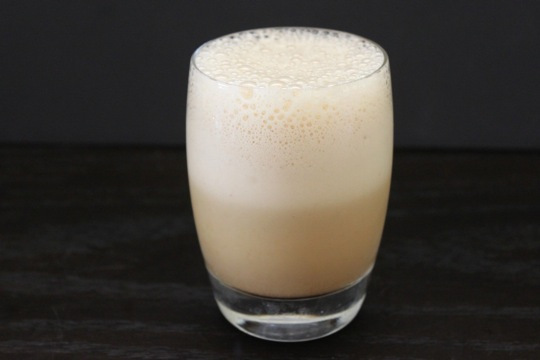
Reader Alex Straftis has come up with a twist on Primal egg coffee that’s so refreshing and invigorating, it’s worth sharing. Simply by adding ice, he’s whipped up a whole new drink with all the same health benefits as regular Primal egg coffee.
His Primal egg coffee frappe is perfect for a hot summer day, a pre-workout boost or a post-workout cooler. The spices can be changed as desired (Alex also adds Hungarian paprika) but the blend below adds a nice hint of flavor while letting the coffee still dominate.
Servings: 8 to 12 ounces
Time in the Kitchen: 20 minutes
Ingredients:
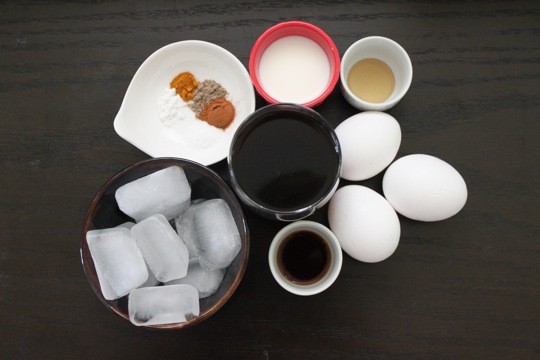
5 ounces coffee, double strength* (use twice the amount of ground coffee you would normally use for 5 oz water) (150 ml)
3 pastured eggs, whole
1 teaspoon raw honey (5 ml)
1/4 teaspoon vanilla (1.25 ml)
1/4 teaspoon of salt (1.25 ml)
1/4 teaspoon cinnamon (1.25 ml)
1/8 teaspoon cardamom (a pinch)
1/8 teaspoon turmeric (a pinch)
1/8 teaspoon cream of tartar** (a pinch)
2 ounces coconut milk (60 ml)
1 1/2 cups ice (a large handful)
*The coffee is brewed at double strength so the flavor isn’t diluted when blended with ice.
**Cream of tartar is optional. It helps stabilize the egg whites and make the drink frothier.
Instructions:
Let the coffee cool slightly, then whisk in the eggs. Cool in freezer for 10 minutes.
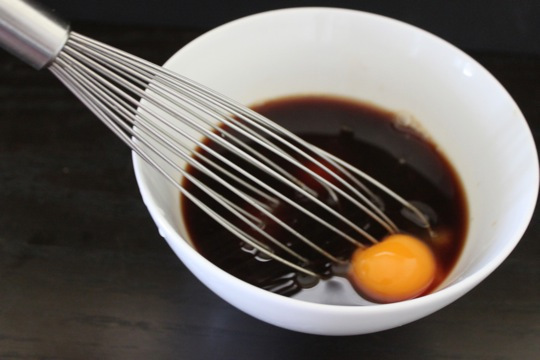
While the coffee is chilling, combine honey, vanilla, salt, cinnamon, cardamom, turmeric, cream of tartar, coconut milk and ice in the blender.
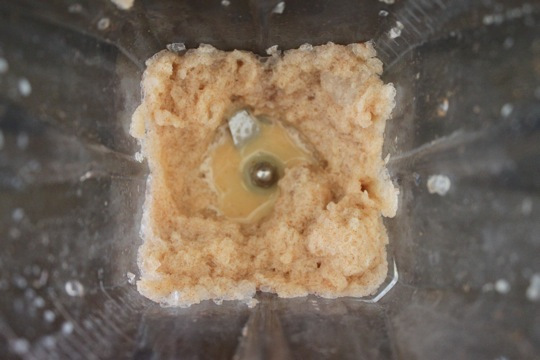
Blend briefly, so the ice cubes are broken into small pieces.
Pour the chilled Primal egg coffee into the blender. Blend again for 30 seconds or so, until the ice is slushy and the top is frothy.

Not Sure What to Eat? Get the Primal Blueprint Meal Plan for Shopping Lists and Recipes Delivered Directly to Your Inbox Each Week




June 27, 2014
Down 360 Pounds in a Year and a Half!
It’s Friday, everyone! And that means another Primal Blueprint Real Life Story from a Mark’s Daily Apple reader. If you have your own success story and would like to share it with me and the Mark’s Daily Apple community please contact me here. I’ll continue to publish these each Friday as long as they keep coming in. Thank you for reading!
 In February 2012 my life was in turmoil. I weighed 518 pounds. I’m a nurse, and I was incredibly close to losing my job and being unable to support myself and my family due to my weight and poor health. I lived in excruciating back pain all the time. I suffered from sleep apnea so severe I required both a bipap and oxygen at night to prevent my oxygen levels from dropping into the 70s. My first sleep study in January 2012 revealed I was having hundreds of apneas each hour, which certainly explained why I was constantly falling asleep behind the wheel, at work, and everywhere and anywhere else. I could barely keep my eyes open during the day.
In February 2012 my life was in turmoil. I weighed 518 pounds. I’m a nurse, and I was incredibly close to losing my job and being unable to support myself and my family due to my weight and poor health. I lived in excruciating back pain all the time. I suffered from sleep apnea so severe I required both a bipap and oxygen at night to prevent my oxygen levels from dropping into the 70s. My first sleep study in January 2012 revealed I was having hundreds of apneas each hour, which certainly explained why I was constantly falling asleep behind the wheel, at work, and everywhere and anywhere else. I could barely keep my eyes open during the day.
I had severe hypertension requiring a multitude of medications. I could barely walk from my car to my front door. I had to stop and sit and pant two or three times just moving from my car to the nurses’ station at my job, and that’s with parking right in front of the door.
I had stopped being able to shop for groceries or do much of anything. I had to make my daughter go into the bank or pharmacy to run errands because I couldn’t stand up for more than a few minutes at a time. Showering was torture, and since I couldn’t afford a shower chair, I had taken to dragging a folding chair into the shower and had my husband install a handheld sprayer for me to use. I barely fit behind the wheel of my car. I didn’t fit into restaurant booths, airplane seats, theater seats, or much of anyplace else.
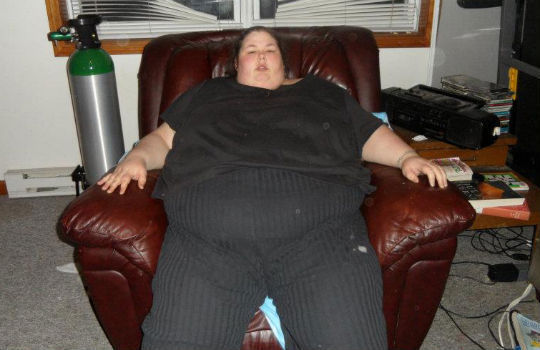
To get through the workday I had to walk into a patient’s room, drag a chair over to their bed, and sit next to them to take their blood pressure and give them pills. I had to lean against the wall to prop myself up while I retrieved meds from my med cart. I cried in the back room every single day as I wondered how much longer I could possibly live like this.
I tried to get weight loss surgery, thinking there was no other way for me. I had been “dieting” for years and years using every method imaginable. I had a horrible binge eating and food addiction problem and thought I would never be able to stop. In January, I went through some pre-op procedures and then found out my insurance wouldn’t pay for the surgery, no matter what my condition and weight was.
I felt sorry for myself and ate and ate and ate for a few weeks, but then I came to a realization: I had to make a choice to continue what I was doing and surely die, and before dying, probably be confined to a bed like one of those people they make TLC shows about OR I had to make a choice to live.
Somehow I found it within me to make the choice to live.
Full disclosure, I started out my journey doing Weight Watchers, and for the first month or so I just followed their program and counted “points.” Exercise didn’t even enter my mind at that point; walking around my living room was a victory lap for me.
I had always been reading online about paleo; for years I had toyed with the notion of giving up grains after reading stuff like the heart scan blog. I don’t remember exactly how I found Mark’s Daily Apple… somewhere deep down the internet rabbit hole a link lead me here and the information I found here truly changed my life.
I read and read for days, and absorbed all the information I could from many of the articles posted here. I quickly decided to give up grains and legumes and processed sugars and otherwise continue with Weight Watchers.
Just taking the step of giving up grains and legumes (and refined or added sugars of course) did amazing things for me. I saw my constant cravings for carbs and starches and sugar fade away. I saw the constant preoccupation with eating and desire to binge start going away. I started doing some intermittent fasting just to reacquaint myself with what actual physical hunger even was, and it felt amazing to start to relearn my body’s signals.
This whole time the weight kept coming off and coming off and I found myself able to do more and more.
As time went on, I started adopting more and more principles of primal eating and the whole lifestyle into my routine.
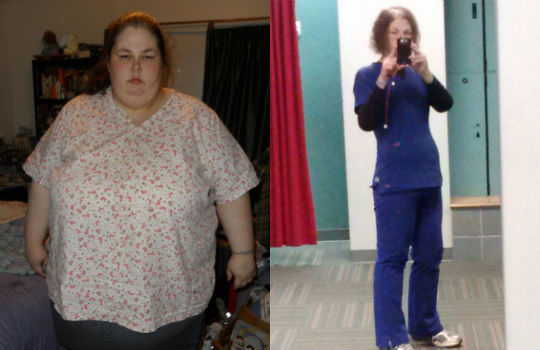
I’m a totally different person now. People don’t even recognize me. Sometimes I don’t even recognize myself. My diet has become better and better and at this point I’m eating local pastured eggs, pastured butter, coconut oil, grass fed meat and poultry, wild sustainable seafood, tons of veggies (mostly organic), plain Greek yogurt, small amounts of nuts and nut butters, avocados, and a couple servings of fruit every day. I enjoy sweet potatoes, white potatoes, and winter squashes in moderation. I have small planned treats every once in awhile (glass of red wine, little bit of ice cream, maybe even a piece or two of pizza, shh, don’t tell anyone).
I am more active than I ever thought possible. I have the whole move frequently at a slow pace thing down pat. I walk many, many miles a week. I’m an avid hiker. I used to hate sunshine and the outdoors and now I am outside enjoying the beautiful national parks and forests near my house every single day.
Over the past six months I’ve been able to incorporate strength training several times a week, and I do bike sprints weekly as well. I’ve shocked myself by what I’ve been able to accomplish. I thought I’d never be able to squat or plank or do a single push up or gain any muscle definition at all. But now I can do all of those things and much, much more.
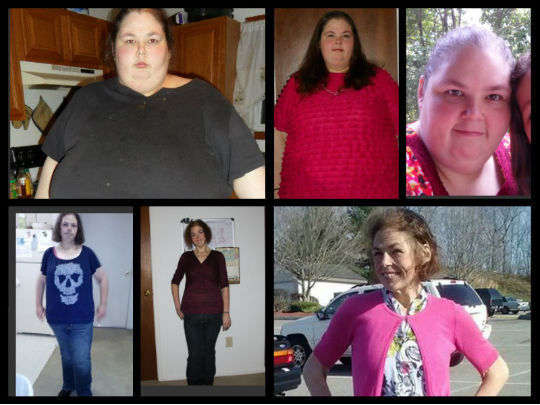
Being outdoors, eating right, being active, sleeping, adopting a more positive life view and attitude in general, and trying to nurture connections with people has all done more for me than antidepressants or anti-anxiety meds ever did. I didn’t even know it was possible for me to feel as good as I do now. I wake up, and even though life isn’t perfect, I feel like every day is an opportunity for good things to happen. I am happy to say I am now off my blood pressure medication and don’t require a BiPAP at night anymore. I have zero back pain. I can manage to hike up steep grades without getting out of breath. My kidney function was also terrible (st stage 3 chronic kidney) and has been totally normal now for a year (a case of BP meds and diuretics messing with my kidneys, being able to go off the meds and my kidneys recovered, go figure).
I met a friend over the weekend and she sent me a message telling me that I’m doing so well, and not just physically, but that mentally and emotionally I’m on a whole different level now, and I’m really feeling that too. I feel like a weight has been lifted off me in so much more than the physical sense. I really feel like I can do whatever I want now.
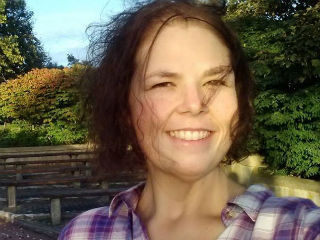 I weigh 160 pounds today. My body fat is 20 percent. I am at my goal weight, something I never thought possible. It almost feels surreal. I don’t think it’s truly hit me yet how far I’ve come in a short time. I couldn’t even imagine doing all the things I do now a few years ago. I am grateful for so many little things in daily life that are so easy to take for granted. I am never going to be a “thin” person, and yes I have a LOT of loose skin (yes, it’s real loose from over 360 lbs in a year and half, and trust me, there will be loose skin) but life is so good and so full of possibility now.
I weigh 160 pounds today. My body fat is 20 percent. I am at my goal weight, something I never thought possible. It almost feels surreal. I don’t think it’s truly hit me yet how far I’ve come in a short time. I couldn’t even imagine doing all the things I do now a few years ago. I am grateful for so many little things in daily life that are so easy to take for granted. I am never going to be a “thin” person, and yes I have a LOT of loose skin (yes, it’s real loose from over 360 lbs in a year and half, and trust me, there will be loose skin) but life is so good and so full of possibility now.
Cindy
Not a Subscriber? You Are Missing Out. Subscribe for Free Today and Instantly Get 8 Primal eBooks and So Much More!




June 26, 2014
Believe It or Not, the Human Body Is Remarkably Resilient
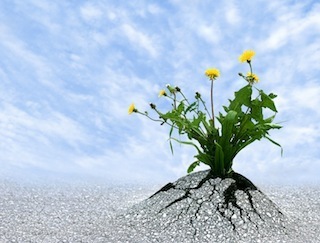 Sometimes in the midst of fine-tuning our health – learning this fact, experimenting with that change – we can get caught up in the drama of nuance. Trust me, I’m all for improving my personal outcome. I’m grateful to be at the point of having all the fundamentals of good health more or less down. I’m happy to be playing with the details, but on some level I recognize it as such. I get to play on the upper rungs of health and vitality. While I wholeheartedly believe the efforts and experimentation are well worth the added benefits, I don’t take myself so seriously at this point. I’ve learned to loosen up. Not only does taking a more casual approach make the process more fun, I think it confers perspective on the whole game. The fact is, I believe in passing on information that can help people lead healthy lives without running around like chicken little if someone so much as eats a French fry. Humor, irreverence, even contrariness might be my bag, but sensationalism just isn’t. Frankly, I find the hype and anxiety of it exhausting.
Sometimes in the midst of fine-tuning our health – learning this fact, experimenting with that change – we can get caught up in the drama of nuance. Trust me, I’m all for improving my personal outcome. I’m grateful to be at the point of having all the fundamentals of good health more or less down. I’m happy to be playing with the details, but on some level I recognize it as such. I get to play on the upper rungs of health and vitality. While I wholeheartedly believe the efforts and experimentation are well worth the added benefits, I don’t take myself so seriously at this point. I’ve learned to loosen up. Not only does taking a more casual approach make the process more fun, I think it confers perspective on the whole game. The fact is, I believe in passing on information that can help people lead healthy lives without running around like chicken little if someone so much as eats a French fry. Humor, irreverence, even contrariness might be my bag, but sensationalism just isn’t. Frankly, I find the hype and anxiety of it exhausting.
The way the health headlines (or let’s face it – any headline) reads these days, you’d think we were all eating our way off a cliff. While I certainly believe conventional practices are robbing people of the full measure of their birthright – a happy, balanced, vital life, I’m not about to scream like my hair’s on fire. My sense is we absorb a continual dose of anxiety promoted by the media or commercial interests about our health always being on the sheer brink. Even those of us who eat a near “perfect” diet, move plenty and workout regularly are always at “risk” for something. After a while, we internalize the 5-alarm mentality. Our health becomes something we have to protect with a never failing, always higher reaching diligence.
What if we’re not as fragile as all that? You know, you could read health blogs all day, and you’d likely come away with the impression that the human body exists in a precipitous balancing act so delicate that the slightest deviation in diet or behavior will wreck the whole house of cards. Can we seriously just dispense with this bogey?
Let’s back up for a moment and acknowledge that the average human body under even the best, most natural of circumstances, goes through a heck of a deal in a lifetime, including the unsavory effects of run-of-the-mill illnesses, hormonal shifts that can feel cataclysmic (e.g. anyone here have a teenager?), inevitable occurrences of various and sundry injuries, the rigors of pregnancy, childbirth (often multiple) and child care, and so on. Even back in Grok’s day, we weren’t all food for evolutionary powder. People often survived some heavy stuff.
Beyond all the big physical events, however, there’s the question of lifestyle inputs. Long before the advent of electricity, gas heat or cargo transport, humans resided in every far-flung corner of the globe with all their uniquely circumscribed resources. The frigid tundra of Alaska and Scandinavia – yes. The unrelenting heat of the Sahara – yes. In keeping, humans have subsisted on food limitations most of us can scarcely imagine – little vegetation in the extreme Northern regions of the globe, little meat in other scattered areas of the world, scarce food supplies for years at a time. Even today, an expansive review of global diets whether in anthropological literature (PDF) or photo collection, illuminates just how many global diets seem “extreme” by our standards. Forget the likes of Doritos, pizzas and soda. What jumps off the page in these examples, for instance, is the blatant minimalism of food intake in many regions – the meagerness in terms of quantity as well as variety – some legumes, rice and a modest bit of native vegetation. While these groups aren’t the longest living populations in the world, they’re not all succumbing to the make-up or missing elements of their diets to the extent we might think.
On a more dramatic note, we can examine the circumstances of individuals who lived with extreme deprivation and duress for months or years. Yes, there are the sobering instances of those who have lived through tremendous human tragedies – survivors of war camps, enemy incarceration and natural disasters who lived in near-starvation and otherwise genuinely brutal conditions but go on to live surprisingly long lives from a physical standpoint (even as countless others don’t in the same tragic circumstances). On a more sensational but individual scale, there are the people who become stranded in remote areas and survive for weeks or even months on next to nothing, like the lost German hiker who evidently survived nearly a month of trekking across 2500 miles of the Australian Outback by eating insects, or another hiker who got lost in a snowstorm and survived four months of a brutal winter in the Andes Mountains by eating “rats and raisins.” The particulars, as curious as they are, aren’t as important as the central message itself: the human body can withstand much more than we often give it credit for.
Rest assured, I’m not suddenly casting off all the principles of the Primal Blueprint. I believe and practice everything in it (as well as The Primal Connection). While we’re less likely to fully thrive on some diets to the degree that we could on another (that’s what the PB advocates and explores), people can live on a wide range of foods and macro profiles. Particularly in the grand scheme of overall lifestyle, our species is surprisingly adaptable.
Let me say I don’t believe in tempting fate (i.e. let’s see how poorly I can eat/treat my body and how long I live that way). Nor do I believe in throwing up my hands and declaring “good enough” to avoid being bothered with anything beyond the most basic of changes. I want to thrive rather than just survive, and I don’t mind a little extra thought and effort to that end. Yet, it’s important, I think, to stand back now and then and appreciate how inherently strong, capable and resilient we all are. In the midst of our health endeavors, it’s a good reminder that the minutiae might not offer us as much benefit as the added stress it can induce when we let it.
Thanks for reading, everyone. What does this message mean to you today? Share your thoughts, and have a great end to the week.
Join Mark Sisson and Friends in Sunny Southern California this Sept. 25-28! Get Your Tickets for PrimalCon Oxnard 2014 Today and Finally Meet Your Tribe!




Believe It or Not, the Human Body is Remarkably Resilient
 Sometimes in the midst of fine-tuning our health – learning this fact, experimenting with that change – we can get caught up in the drama of nuance. Trust me, I’m all for improving my personal outcome. I’m grateful to be at the point of having all the fundamentals of good health more or less down. I’m happy to be playing with the details, but on some level I recognize it as such. I get to play on the upper rungs of health and vitality. While I wholeheartedly believe the efforts and experimentation are well worth the added benefits, I don’t take myself so seriously at this point. I’ve learned to loosen up. Not only does taking a more casual approach make the process more fun, I think it confers perspective on the whole game. The fact is, I believe in passing on information that can help people lead healthy lives without running around like chicken little if someone so much as eats a French fry. Humor, irreverence, even contrariness might be my bag, but sensationalism just isn’t. Frankly, I find the hype and anxiety of it exhausting.
Sometimes in the midst of fine-tuning our health – learning this fact, experimenting with that change – we can get caught up in the drama of nuance. Trust me, I’m all for improving my personal outcome. I’m grateful to be at the point of having all the fundamentals of good health more or less down. I’m happy to be playing with the details, but on some level I recognize it as such. I get to play on the upper rungs of health and vitality. While I wholeheartedly believe the efforts and experimentation are well worth the added benefits, I don’t take myself so seriously at this point. I’ve learned to loosen up. Not only does taking a more casual approach make the process more fun, I think it confers perspective on the whole game. The fact is, I believe in passing on information that can help people lead healthy lives without running around like chicken little if someone so much as eats a French fry. Humor, irreverence, even contrariness might be my bag, but sensationalism just isn’t. Frankly, I find the hype and anxiety of it exhausting.
The way the health headlines (or let’s face it – any headline) reads these days, you’d think we were all eating our way off a cliff. While I certainly believe conventional practices are robbing people of the full measure of their birthright – a happy, balanced, vital life, I’m not about to scream like my hair’s on fire. My sense is we absorb a continual dose of anxiety promoted by the media or commercial interests about our health always being on the sheer brink. Even those of us who eat a near “perfect” diet, move plenty and workout regularly are always at “risk” for something. After a while, we internalize the 5-alarm mentality. Our health becomes something we have to protect with a never failing, always higher reaching diligence.
What if we’re not as fragile as all that? You know, you could read health blogs all day, and you’d likely come away with the impression that the human body exists in a precipitous balancing act so delicate that the slightest deviation in diet or behavior will wreck the whole house of cards. Can we seriously just dispense with this bogey?
Let’s back up for a moment and acknowledge that the average human body under even the best, most natural of circumstances, goes through a heck of a deal in a lifetime, including the unsavory effects of run-of-the-mill illnesses, hormonal shifts that can feel cataclysmic (e.g. anyone here have a teenage?), inevitable occurrences of various and sundry injuries, the rigors of pregnancy, childbirth (often multiple) and child care, and so on. Even back in Grok’s day, we weren’t all food for evolutionary powder. People often survived some heavy stuff.
Beyond all the big physical events, however, there’s the question of lifestyle inputs. Long before the advent of electricity, gas heat or cargo transport, humans resided in every far-flung corner of the globe with all their uniquely circumscribed resources. The frigid tundra of Alaska and Scandinavia – yes. The unrelenting heat of the Sahara – yes. In keeping, humans have subsisted on food limitations most of us can scarcely imagine – little vegetation in the extreme Northern regions of the globe, little meat in other scattered areas of the world, scarce food supplies for years at a time. Even today, an expansive review of global diets whether in anthropological literature (PDF) or photo collection, illuminates just how many global diets seem “extreme” by our standards. Forget the likes of Doritos, pizzas and soda. What jumps off the page in these examples, for instance, is the blatant minimalism of food intake in many regions – the meagerness in terms of quantity as well as variety – some legumes, rice and a modest bit of native vegetation. While these groups aren’t the longest living populations in the world, they’re not all succumbing to the make-up or missing elements of their diets to the extent we might think.
On a more dramatic note, we can examine the circumstances of individuals who lived with extreme deprivation and duress for months or years. Yes, there are the sobering instances of those who have lived through tremendous human tragedies – survivors of war camps, enemy incarceration and natural disasters who lived in near-starvation and otherwise genuinely brutal conditions but go on to live surprisingly long lives from a physical standpoint (even as countless others don’t in the same tragic circumstances). On a more sensational but individual scale, there are the people who become stranded in remote areas and survive for weeks or even months on next to nothing, like the lost German hiker who evidently survived nearly a month of trekking across 2500 miles of the Australian Outback by eating insects, or another hiker who got lost in a snowstorm and survived four months of a brutal winter in the Andes Mountains by eating “rats and raisins.” The particulars, as curious as they are, aren’t as important as the central message itself: the human body can withstand much more than we often give it credit for.
Rest assured, I’m not suddenly casting off all the principles of the Primal Blueprint. I believe and practice everything in it (as well as The Primal Connection). While we’re less likely to fully thrive on some diets to the degree that we could on another (that’s what the PB advocates and explores), people can live on a wide range of foods and macro profiles. Particularly in the grand scheme of overall lifestyle, our species is surprisingly adaptable.
Let me say I don’t believe in tempting fate (i.e. let’s see how poorly I can eat/treat my body and how long I live that way). Nor do I believe in throwing up my hands and declaring “good enough” to avoid being bothered with anything beyond the most basic of changes. I want to thrive rather than just survive, and I don’t mind a little extra thought and effort to that end. Yet, it’s important, I think, to stand back now and then and appreciate how inherently strong, capable and resilient we all are. In the midst of our health endeavors, it’s a good reminder that the minutiae might not offer us as much benefit as the added stress it can induce when we let it.
Thanks for reading, everyone. What does this message mean to you today? Share your thoughts, and have a great end to the week.
Not a Subscriber? You Are Missing Out. Subscribe for Free Today and Instantly Get 8 Primal eBooks and So Much More!




June 25, 2014
16 Things That Affect Your Gut Bacteria
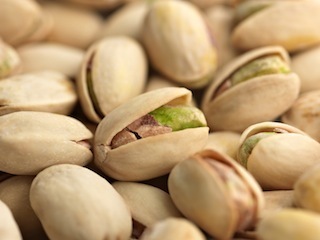 A couple months ago, we explored many of the ways our gut bacteria affect us, focusing on the lesser known effects like anti-nutrient nullification, vitamin manufacture, and neurotransmitter production. Today, we’re going to discuss all of the ways (that we know) we can affect our gut bacteria. It turns out that the food we eat, the amount of sun we get, whether we eat organic or not, the supplements we take, and even the kind of nuts or chocolate we decide to eat – just to name a few factors - can change the composition and function of our gut microbiota for the good or for the bad. We may still have a lot to learn about this gut stuff, but the bulk of the evidence says that we do have the power (and responsibility if you care to be healthy) to affect the health of our gut microbiota.
A couple months ago, we explored many of the ways our gut bacteria affect us, focusing on the lesser known effects like anti-nutrient nullification, vitamin manufacture, and neurotransmitter production. Today, we’re going to discuss all of the ways (that we know) we can affect our gut bacteria. It turns out that the food we eat, the amount of sun we get, whether we eat organic or not, the supplements we take, and even the kind of nuts or chocolate we decide to eat – just to name a few factors - can change the composition and function of our gut microbiota for the good or for the bad. We may still have a lot to learn about this gut stuff, but the bulk of the evidence says that we do have the power (and responsibility if you care to be healthy) to affect the health of our gut microbiota.
Here are 16 things to do, eat, avoid, and/or heed:
Fermentable fibers
I’ve discussed this variable to death, but it may be the single most important pro-gut biome dietary modification we can enact. Without fermentable fibers, our gut bacteria just aren’t getting the food they need to maintain the population – let alone grow it.
Fermented foods
From sauerkraut to pickles to kimchi to kefir to condiments to “high meat,” fermented foods have been a consistent part of the human diet for many thousands of years. And while it’s unlikely previous generations had detailed knowledge of the gut biome, today we know that fermented food plays an important role in shaping the health of our guts. Yogurt, one of my favorites, often changes the composition of the gut biome for the better. But even when it has no effect on the population or composition of a microbiome, fermented food can change the way the existing population works. In one study, for example, bacterial strains isolated from fermented milk didn’t colonize the gut but led to increased microbial expression of carbohydrate metabolizing enzymes. In another study, yogurt and probiotic supplementation allowed lactose-intolerant subjects to tolerate a greater amount of dietary lactose by changing their colonic bacteria.
Fermented foods aren’t a “one and done” deal. You have to maintain an ongoing relationship with them in order to enjoy the full benefits and sustain the colonization. It’s more accurate to consider them necessary foods we need to eat regularly rather than supplements or medicines.
Polyphenols
Even though we usually think of the polyphenols found in blueberries, red wine, green tea, and other fruits and vegetables as plant pharmaceuticals that we absorb and utilize instantly, their bioavailability in humans is controversial. Emerging evidence suggests we derive many of the benefits through interaction between phenolic compounds and our gut bacteria, which consume the glycan bonds holding the polyphenols together and render them available for absorption. The glycans are prebiotics for the bacteria, and the liberated phenols are more bioavailable to us. Even red wine polyphenols may have prebiotic effects on the gut flora (though keep in mind that some of us have different reactions to it).
Dark chocolate
Dark chocolate falls under the “Polyphenols” and “Fermentable fiber” categories, so this section was probably unnecessary. But c’mon: it’s dark chocolate, a combination of gut-supportive polyphenols and prebiotic fiber so delicious that we should welcome any and all justifications for its consumption, however redundant they may be.
Pistachios
Pistachios are another special package of fiber and polyphenols with potent prebiotic power. Other nuts like almonds aren’t too shabby, but pistachios beat them soundly in a head-to-head matchup, producing a biome richer in butyrate-secreting bacteria. And since they usually come in shells, overconsumption is hard if you’re worried about self-control.
Resistant starch
Resistant starch, or RS, is a unique kind of starch that humans by and large cannot digest. It’s not a fermentable fiber, but it acts like it. Upon its consumption, RS travels mostly unperturbed through the digestive tract into the colon where the colonic bacteria – who can digest the stuff – feast on it, get frisky, and reproduce. Multiple studies indicate that RS consumption generally leads to an increase in beneficial colonic bacteria and a reduction in pathogenic colonic bacteria, including a boost to bifidobacteria and a decrease in firmicutes.
Animal “fiber”
Carnivorous animals like cheetahs treat otherwise indigestible animal parts like prebiotics, displaying evidence of healthier gut bacteria when eating whole rabbits than when eating beef muscle meat. As animals with a long (pre)history of consuming other animals, it’s a good bet that humans retain this ability as well. The gristly bits at the end of a drumstick, the snapping tendons that floss your teeth as you eat a turkey leg, the crunchy cartilage you have to scrape off the oxtails with your front teeth, the skin on a pork belly - these are examples of animal tissue with the potential to affect our gut bacteria.
Vitamin D status
Vitamin D helps regulate the immune system, as we know. Low vitamin D status (or low exposure to UV radiation) is consistently linked to increased autoimmune disease, allergies, infections, and other immune conditions. Meanwhile, our gut bacteria comprise a huge chunk of our immune system, modulating the allergenicity of food fragments, crowding out pathogens, and regulating the development and maintenance of our immune cells. Could one affect the other? Absolutely. A recent paper in rodents shows that vitamin D status regulates the microbiome, with a deficiency causing dysbiosis and inducing colitis.
Exercise
In last week’s Dear Mark, I discussed a new study showing that professional rugby players participating in an intense training camp had a more diverse (and healthier) gut microbiome than age and BMI-matched controls, despite experiencing a ton of acute stress (all the exercise). While the rugby players also ate more gut-modulating foods like fruits, vegetables, and protein and snacked less than the control groups, and this may have improved their gut diversity, this study is the first to shows that lots of exercise is compatible with and even supportive of healthy gut flora. The flipside is that lots of exercise without adequate support (recovery, rest, good food, sleep) will probably be enough of a stressor to negatively impact gut flora. Don’t overtrain and don’t undertrain.
Food variety
Much of the gut bacteria we get comes riding on the food we eat or our gut bacteria learn how to break down certain foods from the bacteria riding on the food. One example of this is that in most Japanese people, some of their gut bacteria have picked up the genes for seaweed digestion from the bacteria found on seaweed. The seaweed bacteria “taught” the resident gut flora how to handle the food. This gene transfer doesn’t happen with a single seaweed meal. They need sustained exposure to the seaweed and its bacteria. A recent study in fish even supports this idea: fish eating the most diverse diet had the least diverse gut microbiome.
So variety is good, just not too much. You want enough variety that you expose yourself (and your flora) to colorful fruits and veggies, fermentable fibers, and healthy fats, but not so much that you never eat the same thing twice. Eating some staple foods on a regular basis will allow you to develop the gut flora equipped to break them down. Be consistent.
Antibiotics
Of course antibiotics affect the gut flora. Their stated purpose is to (negatively) affect microbial life. Use them if it’s medically necessary, but be advised that most antibiotics are indiscriminate killers WW2-era carpet bombing entire cities of bacteria. They get the pathogens (unless they’re resistant, of course) and the good guys, reducing microbial diversity and shifting the balance of the microbiome to favor unwanted strains. These changes may be lasting without serious and sustained prebiotic and probiotic interventions. Unfortunately, with even doctors prescribing them to patients with conditions for which antibiotics don’t help, medical necessity is difficult for the layperson to parse.
Probiotics
Like with fermented foods, we should think of probiotic supplements as friends. Not those friends you always tell “we should totally hang out more!” when you run into them but never do. Real friends. The ones you have over for dinner every week. The ones you include in group texts that go for months without breaking. That’s how you should treat probiotics – like real friends whose company you genuinely enjoy and who come in capsules and require refrigeration.
Take probiotics with food or 30 minutes before meals, as our bodies are “meant” to consume probiotics with food (i.e. fermented food); they seem to survive the transit through our gut when taken this way (as opposed to after a meal).
Roundup
“Skeptic” science writers and corporatist apologists are quick to point out that glyphosate, the active herbicide used in Roundup, is non-toxic to humans. Roundup kills weeds by disrupting the shikimate pathway (PDF), a pathway involved in the biosynthesis of several crucial amino acids. Human cells are relatively unaffected by the herbicide because our cells don’t use the shikimate pathway. There’s nothing to disrupt. All good?
Unfortunately, no. Bacteria also employ the shikimate pathway, and we’ve got an awful lot of them living inside our bodies and handling some very important tasks, including immune function, digestion, production of neurotransmitters, mood regulation, and many more. This means our gut bacteria may be susceptible to Roundup residue on the foods we eat (and the air we breathe, the water we drink, and so on). This isn’t a big issue for people eating Primal because the biggest offenders are genetically modified soybeans and corn (and all the related food products) – two foods you likely aren’t eating. That said, your exposure may be elevated if the food you eat eats a lot of Roundup-laden soy and corn (PDF), like CAFO livestock, dairy, and battery-farmed poultry. All the more reason to favor pastured animal products.
Smoking
Or rather, cessation of smoking. Smokers who give up smoking experience weight gain and more microbial diversity. The media reports focused mostly on the weight gain, but I think the shift in gut bacteria – toward the mostly beneficial Actinobacteria away from the Proteobacteria (home to “a lot of your bad guys“) – is the most significant news.
Time
It takes time to build your gut flora. Initial changes happen rapidly, but sustaining them requires giving your bugs time to adapt and dig in. If you try resistant starch, don’t give up after a day. Give it a few weeks. If you try probiotics or sauerkraut, take them consistently for an extended period of time before throwing in the towel and assuming they don’t work. If you’re expecting your monthly gym foray to positively affect your gut, think again.
Dirt
I almost forgot. Get dirty. Don’t be a clean freak if you can help it. I’m not saying you shouldn’t wash your hands after wiping, handling raw chicken, or dumpster diving, but be a bit more relaxed when it comes to getting your hands dirty. Garden, and don’t freak out if you misplace your gloves. Eat a fresh carrot pulled straight from the ground. Enjoy a soil smoothie twice a week. Pet a dog. Expose yourself to the outside world, soil and grime and dust and dirt and all, on a regular basis. I’m kidding about one of those (never garden without gloves!). Bacteria is everywhere – you really can’t avoid it – and most of it isn’t out to kill you.
Don’t be overwhelmed by this information. Don’t feel like anything and everything you do could have a drastic effect on your gut bacteria. For all the warnings and studies and focus, our gut flora are resilient buggers that have evolved – and are still evolving – to respond and react to the environment. If something affects them negatively, they can bounce back. And even in the case of major changes wrought by antibiotics or months of stress or medical procedures, you can help them bounce back.
Information like this should empower you. When I learn how the fate of my gut flora (or muscle mass, or bone density, or eyesight) ultimately rests in my hands, I’m excited and eager to assume the mantle of responsibility. That’s total freedom and it’s the most important thing in this life. It’s all we’ve got.
Thanks for reading, everyone. How do you feel about this information? Empowered, overwhelmed? A bit of both?
Like This Blog Post? Dig Deeper with Primal Blueprint Books and Learn How You Can Reprogram Your Genes to Become Leaner, Stronger and Healthier




June 24, 2014
A Weekend to Remember: PrimalCon New York 2014
 I wrote this blog post as PrimalCon Mohonk was coming to an end a couple weeks back, but am just now getting around to publishing it. As you’ll see, it was an incredible event.
I wrote this blog post as PrimalCon Mohonk was coming to an end a couple weeks back, but am just now getting around to publishing it. As you’ll see, it was an incredible event.
I hope you’ll join me and other paleo experts and enthusiasts at PrimalCon Oxnard this coming September. But more on that at the end of this post…
Just sitting down to reflect for the first time in 72 hours of absolutely whirlwind fun, excitement and enjoyment at the amazing Mohonk Mountain House in the Hudson Valley of New York. Seventy-five of us are now headed our separate ways as we closed our eighth PrimalCon event on Sunday afternoon June 8th. With this being a new PrimalCon venue there were a few unknowns, but we were more than pleasantly surprised by this amazing resort.


Blown away is a better word. The friendly, efficient Mohonk staff catered to our every need, especially at meal times when they created lavish buffets of Primal-style meals. Mohonk’s awesome food services manager Steven Small said we were the easiest group ever to cater to: “So, uh – no bread, no rolls? No rice, or pasta? No pancakes or scones or muffins in the a.m.? No dessert cart? Just the meats and vegetables and salads and omelet bar and bacon and guacamole [3 cases of avocados worth…]?” Yep, that’s us. Steven also informed us that by his calculation, our hearty group of 75 souls consumed the same amount of food they ordinarily serve 200 dinner guests!

Mohonk catering indeed got a good education on Primal eating strategies. The multitalented Mike DiLandro introduced them to bulletproof coffee, as he commandeered a coffee machine, a blender and ample supplies of butter and coconut oil to set up shop each morning. The group went through so much butter on day one that Mike brokered an emergency order from a local farmer for a hefty load of grassfed butter for day 2 and 3 service. Alas, Mike’s tip about going with bulletproof coffee in lieu of an omelet feast fell on deaf ears…But it turns out our group would need the extra energy for action packed days – more in a bit.
Mohonk is a classic, 145-year-old New York state resort catering to the big city folk an hour South, and the regular weekenders and huge wedding parties definitely felt our presence on the grounds. One PrimalConner related that he overheard some guests he passed in the hallway exclaim, “There go those barefoot people again”.
We tried a new ice-breaker game at the very start of the conference (thanks to feedback from past PrimalCon guests!) and it turned out to be a real doozy. It entailed sharing some interesting facts about yourself, and this group certainly delivered. We had mild mannered Katie from nearby Poughkeepsie who happens to deadlift 300 pounds (2.5x body weight!); Eric Kampmann, the CEO of Midpoint Trade (distributor of all Primal Blueprint Publishing titles) related his feat of hiking the entire Appalachian Trail and also climbing 48 of New Hampshire’s 4,000’ peaks; Dr. Cate Shanahan bolstered her already robust resume when she revealed that she has “the frizziest hair of any human on planet earth”; John Durant once killed a pigeon in Central Park and ate it, and so on.
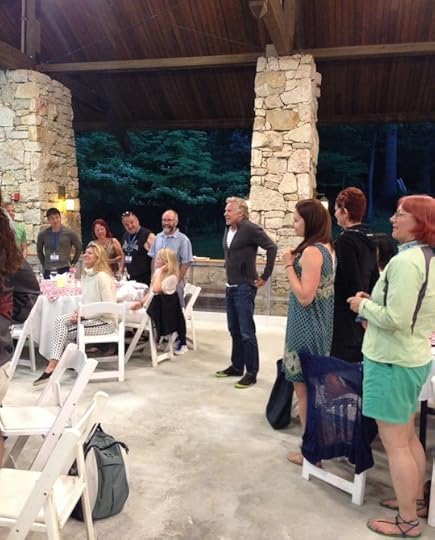
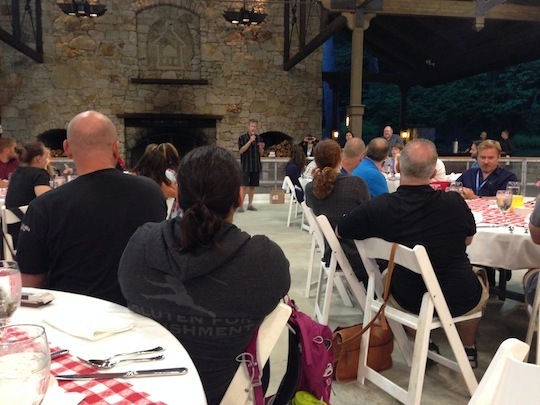
Louisa shared that she was a “lifetime barefooter”. Nothing special there with this crowd, except that she was being literal! Upon arrival for dinner the first evening, she was cornered by hotel staff and politely asked to don a pair of shoes. “What for?” she asked. “Possible broken glass or debris on the carpet” was the answer. Louisa informed them that not only was she unconcerned about such dangers, but that she planned to tackle the lemon squeeze/labyrinth rock scramble the following day barefoot.
Ah, the labyrinth…The pictures can give you a good sense of the rock scramble ascent, but I was quite surprised at just how elaborate and challenging this course was. The hour-long, 300-foot ascent put the Primal Blueprint Fitness principle of functional, full body movements to the complete test. We had to boulder hop (harkening memories of my childhood play on the rockbound beaches of Maine), problem-solve the optimal scramble lines, shimmy through tight crevasses (too tight even for a backpack to stay on!), ascend long ladders, bridges, and ramps set thoughtfully into the granite cliffs, and finally emerge to a stunning 360-degree view of the Hudson Valley.

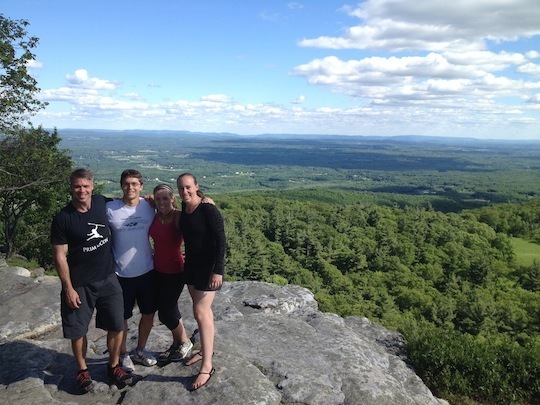
Did I say “hour-long ascent”? Well, certain superfit presenters (guesses anyone?) decided to squeeze in an extra ascent one day before breakfast. Angelo the Ninja Warrior dela Cruz went up and back in 21 minutes, while Paleo Primer authors Matt Whitmore and Keris Marsden reported a 28-minute round trip, but from a different starting point… Hence, the word “rematch” was mentioned a few times at breakfast…Speaking of friendly competition, the Ultimate Frisbee battle royale lived to its name. We had an interesting mix of aforementioned athletic presenters, high-flying college dudes, sandbagging talents mumbling about having not played much Frisbee in a while, and an extremely brave and talented group of females holding their own and then some in the “A” game. Naturally, the final match went into sudden death overtime and ended just in time for no one to collapse of exhaustion.
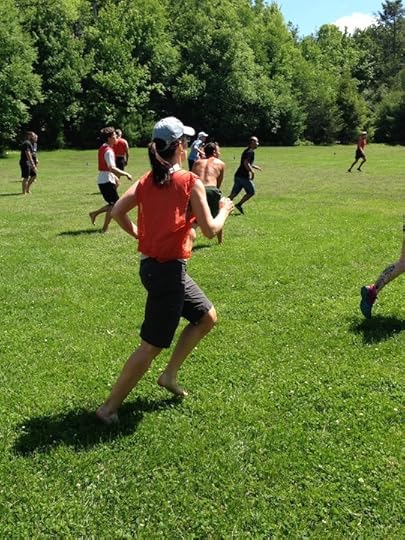
Mind you, the Ultimate battle was just a small sliver in the “something for everyone” mosaic that shaped the weekend. We had a good crowd of sunbathers lounging in the grass watching the Frisbee action or taking turns on the slackline (now a PrimalCon fixture). We had plenty of excellent indoor action too. Mike DiLandro delivered his Primal Transformation seminar in its entirety to provide a great general overview of the movement for those interested. I threw a new wrinkle into my keynote and shared some life story elements that shaped my journey to the Primal Blueprint. Dr. Cate did her thing with an education into the medical science that validates our intuitive sense that Primal living just works (who can forget her animated DNA slides of our genes in action!). Luke Shanahan covered the writing process, a topic he has quickly made super-popular at PrimalCon. John Durant discussed his latest “obsessions”: the emasculation of the modern male, the evolution of disgust (including how it influences food choices), and the power of habitat. Even Matt and Keris overcame a wisecrack challenge from emcee Brad Kearns and were able to stay still indoors long enough to deliver their informative 90-minute keynote, “Health, Fat Loss and Performance”.
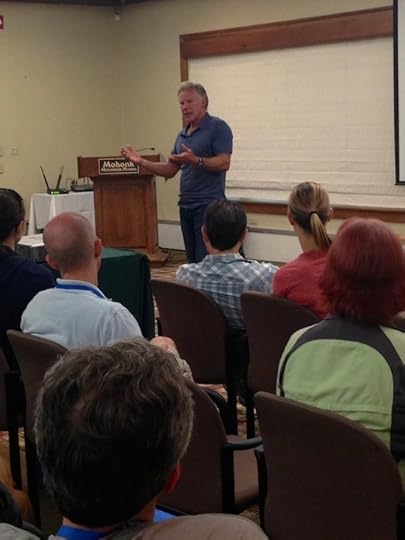
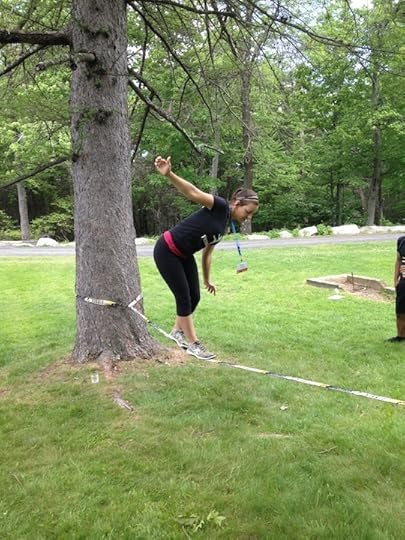
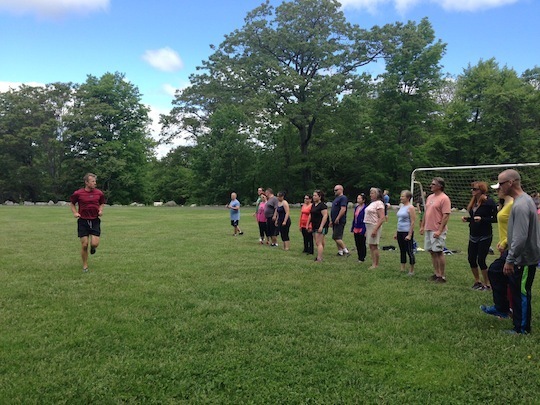
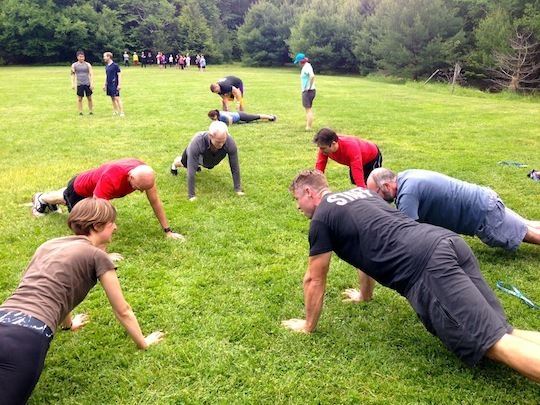
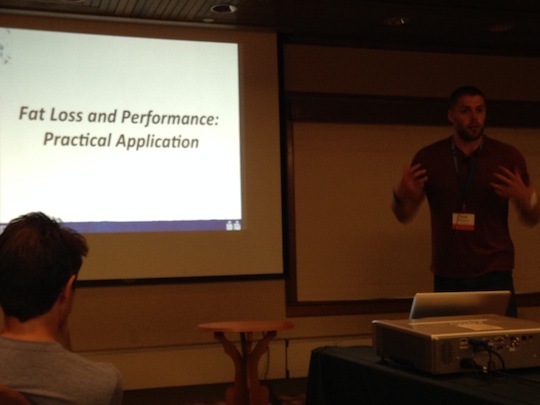
Darryl Edwards once again embodied the joys of play (and having boundless and infectious energy), making use of every second of the weekend to get people out of their comfort zones and into play mode. An Angelo made it a perfect 8 for 8 with PrimalCons, starting our days out right with his one-of-a-kind VitaMove sessions. Angelo and holistic healer Dr. Mike Greenberg from Atlanta also kept busy delivering their unique 1-on-1 treatments to help people ease physical pain and clear emotional blocks, respectively.
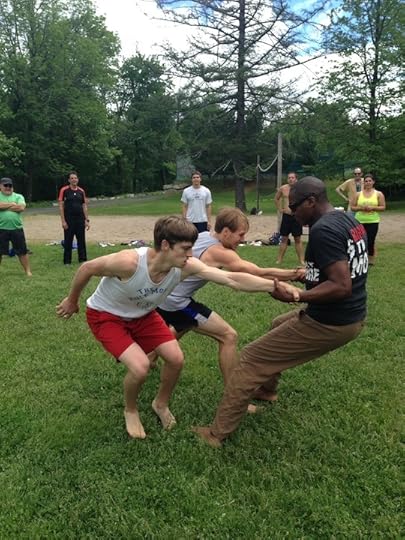
It was also really special for Carrie and I to share the PrimalCon experience for the first time with our daughter Devyn, who two weeks prior had graduated from the renowned Eugene Lang’s New School in New York City (living that close, she pretty much had to show up for this one!) Well, Devyn fell right in with the group, thanks in part to an extremely impressive contingent of college kids who are deep into this Primal thing, to the great satisfaction of myself and others who hold out hope for the younger generation. How about the photo of Devyn and Keris Marsden paddling their impressively seaworthy craft to the finish line in the hotly contested cardboard regatta—the grand finale of the PrimalCon team adventure race and scavenger hunt custom-designed by Mohonk’s recreation staff led by Shaw Hipsher.
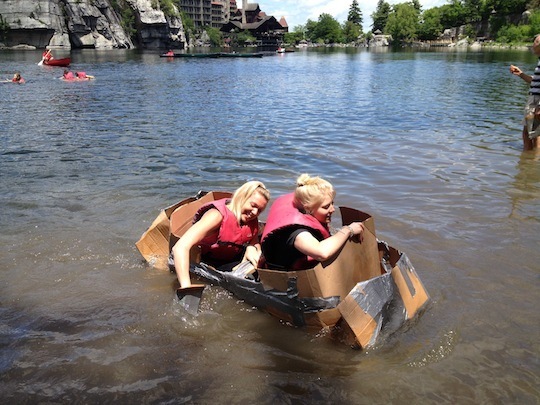
Brian, a student at Colby College, stepped up to deliver an impromptu early morning yoga class on Saturday and a guided meditation on Sunday morning. Heads up for anyone harboring preconceived judgments about today’s typical hard-partying college kids—these kids were fully informed, fully engaged and fully prepared to carry the torch for the future of the movement. Brian said afterward, “This weekend was the best weekend of my life and changed my life permanently. All of us are filled with this afterglow of happiness and motivation.”
Someone at the resort asked me who our “typical” PrimalCon guest is. When you get to know the individuals that come to these events, the main impression you’ll get is diversity. There is no typecast PrimalConner. There are no pre-requisites to have super fitness credentials or a multi-year track record in the game. This is a dynamic and constantly evolving movement that attracts people of all ages, fitness levels, and personalities. A couple of the cooler attendee back stories: Aunt Judy bringing her young niece Greta along; The Ohio bubbly personal trainers Tina and Laura coming out and Laura’s client Sara joining them. Or the young couple from The Ohio State University, Zach and Lena, celebrating the end of their junior year with all of us.
Also going 8 for 8 at PrimalCon was everyone’s favorite camp counselors, Chris Adams and Tina Leaman from Arizona, who have shown phenomenal devotion and commitment to maximize the enjoyment of every single PrimalCon guest at every event to date. We also welcomed our youngest PrimalCon attendee in Liara Niskala, the recent offsprint of veteran PrimalCon staffers Chris and Mary Niskala. Liara was always ready for a friendly smile and wave to the assortment of smiling faces she encountered over the weekend.
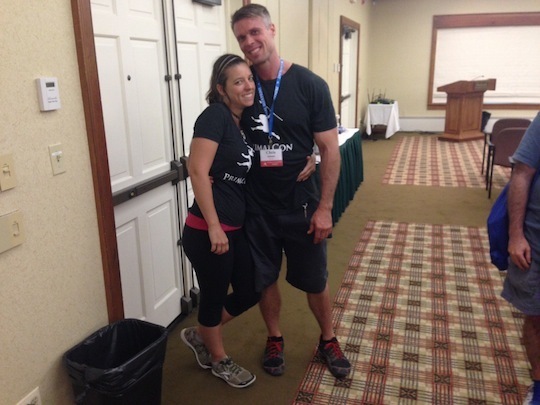
Another highlight was the attendance in person of the young couple behind Eating Evolved and their incredible Primal Chocolate line. Christine Cusano and Rick Gusmano are totally devoted to making the highest quality, best-tasting chocolate on the planet, and were extremely generous in feeding each guests to their heart’s content at the evening campfire and also sending them home with all the bars they could grab in two hands!
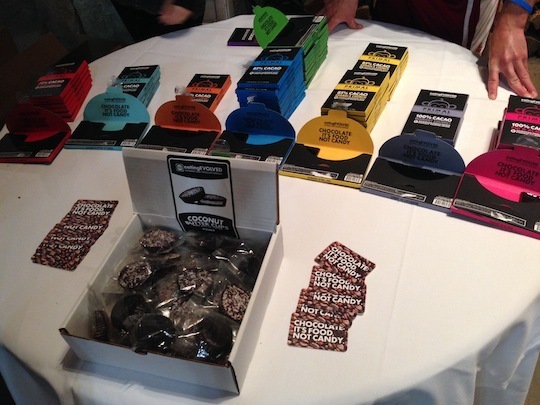
Every single PrimalCon is special and memorable for assorted reasons, but at the grandness and exceptional hospitality of the Mohonk Mountain House will really stick in my mind. As Carrie said after driving up the mountain and seeing Mohonk for the first time, “I was expecting some rustic country summer camp, not a castle!”
I know it’s difficult to summon the time, energy, investment to get out of your routine and join us for a PrimalCon, but if you value your participation in this community, I cannot recommend PrimalCon highly enough. Of course this might sound pandering being the host and all, but what I really mean is that the live, interpersonal connections we make at PrimalCon represent the highest expression of our power and potential as a “Primal community”.

And I’m talking about connection in every sense and every direction. It’s not just sitting your butt into a chair and getting educated by smart people, but more like the greatest family reunion imaginable, where everyone is happy, positive, supportive and enthusiastic for a magical dream weekend.
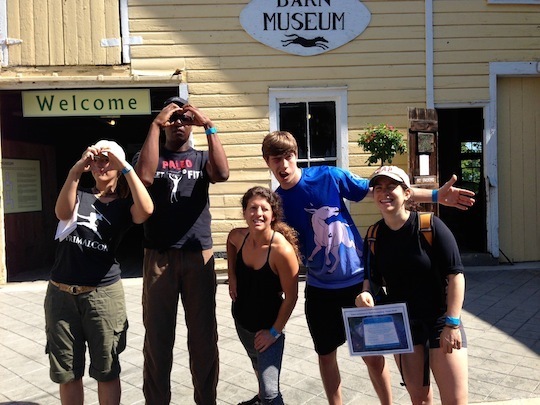
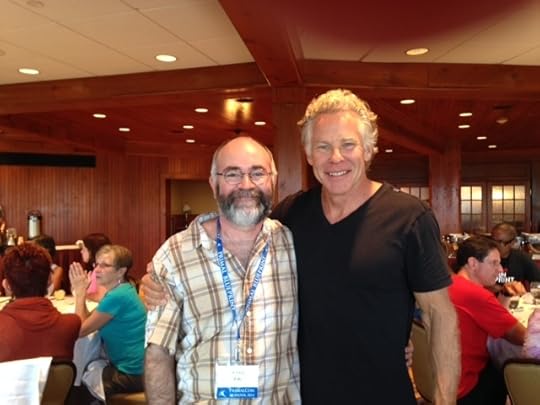
Oh sure, real life awaits me and the rest of us when we return home, but we return to routine invigorated and inspired in a way that deepens our appreciation for the simple pleasures of our days, and helps us stay resilient in the face of challenges and setbacks that arise. I know that even my commitment to Primal living requires a regular boost of freshness and inspiration, and that’s exactly what I get from attending each PrimalCon. I hope to see you in Oxnard this September or perhaps at Mohonk as we aspire to return next June!
 Speaking of PrimalCon Oxnard, Sept 25-28 marks our fifth trip to this ideal seaside location in Southern California. We base the event at the newly remodeled Mandalay Beach resort, where we’ll eat meals in their comfortable ballroom, stage indoor lectures, and take over their pool and jacuzzi each evening. Next door to the resort is the expansive Oxnard Beach Park – giant soft grass recreation fields and a picnic structure where we lunch daily. An expanse of natural sand dunes dotted with wild grass separate the park from the sandy beach and breaking waves of the Pacific. We make full use of the natural environment with our outdoor fitness classes, our team Survivor challenge and of course our traditional PrimalCon ocean plunge/jacuzzi sprint.
Speaking of PrimalCon Oxnard, Sept 25-28 marks our fifth trip to this ideal seaside location in Southern California. We base the event at the newly remodeled Mandalay Beach resort, where we’ll eat meals in their comfortable ballroom, stage indoor lectures, and take over their pool and jacuzzi each evening. Next door to the resort is the expansive Oxnard Beach Park – giant soft grass recreation fields and a picnic structure where we lunch daily. An expanse of natural sand dunes dotted with wild grass separate the park from the sandy beach and breaking waves of the Pacific. We make full use of the natural environment with our outdoor fitness classes, our team Survivor challenge and of course our traditional PrimalCon ocean plunge/jacuzzi sprint.
While PrimalCon represents a significant investment of time and energy to get yourself to the event, the value of your experience is undeniable and long-lasting. Check out our Facebook page to get a sense of the connection and nostalgia our guests bring home from their weekend getaway. We’ve negotiated an incredible package with the Mandalay Beach resort to make this the most affordable PrimalCon ever!
Our special PrimalCon rate package at this all-suite facility starts out at $159/night – simply the best value anywhere in Southern California. And, knowing what kind of tight-knit group we are, they don’t mind if you stick 3, 4, or even 5 people into a single suite (King or 2 queen bedroom and living room with pullout and split the cost!). That’s right, you can rally your Primal friends to make a group pilgrimage to Oxnard and have the time of your lives together, and also branch out to make great new connections with the larger group. One group from Northern California has booked out the penthouse Presidential suite (only $599/night) and will be luxuriating in style while splitting the room rate by five! Not a bad vacay idea!
Join Us at PrimalCon Oxnard 2014 September 25-28 for an Experience of a Lifetime




June 23, 2014
Dear Mark: Grains and Joints, Cardamom, and The Cause of Aging Muscle
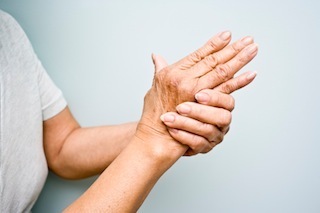 For today’s Dear Mark, we’ve got a three-parter. First: a question about grains and joint health from a reader who gets achy and creaky every time she veers off schedule and eats grains. Is this common? Is it supported by any real evidence? Yes and yes. Next is a short overview of cardamom, that other Indian spice that you never hear much about. Turns out it’s got some potential. And finally, I (try to) assuage the existential fears of a young guy who will eventually be an old guy freaking out about the impending and inevitable loss and dearth of his muscle mass.
For today’s Dear Mark, we’ve got a three-parter. First: a question about grains and joint health from a reader who gets achy and creaky every time she veers off schedule and eats grains. Is this common? Is it supported by any real evidence? Yes and yes. Next is a short overview of cardamom, that other Indian spice that you never hear much about. Turns out it’s got some potential. And finally, I (try to) assuage the existential fears of a young guy who will eventually be an old guy freaking out about the impending and inevitable loss and dearth of his muscle mass.
Let’s go:
Dear Mark,
I have been going paleo off and on since the new year. (I’m working on getting to 100%.) I have noticed that when I go off track, I start to feel aching in my joints within hours, and they even seem to pop more. Is this just in my head, or can the grains really be responsible for this?
Thanks for your thoughts,
Janet
That’s actually a common experience throughout the ancestral community. You’ve got folks reporting rheumatoid arthritis remission upon adopting a strict paleo approach. You’ve got people overcoming osteoarthritis following the Perfect Health Diet. And you’ve got people in the MDA forums overcoming or improving their psoriatic arthritis symptoms.
I’ve noticed the same thing. I used to assume that my joint pains and various types of “-itis” were caused primarily by my heavy chronic cardio habit back in the day, but I’m not so sure anymore. Anytime a significant portion of grains enter my diet, which is a rare occurrence (think a piece of crusty bread at a restaurant, a slice of cake politely accepted at a birthday party, that kind of thing), the first negative effect I notice is joint pain, crepitus (popping), and general creakiness. My old finger arthritis comes back consistently after grain indulgence, and that wasn’t caused by wear and tear. I mean, who gets finger arthritis just from running marathons?
And know, we’re not just “making it up” nor are we suffering one of those collective delusions that are supposedly so common these days. While there’s no smoking gun, there’s a decent amount of evidence suggesting a connection between grains and arthritis.
As you probably already know, going Primal eliminates several potent sources of lectins - grains and legumes. Well, Cordain has an entire paper (PDF) reviewing the potential mechanisms of dietary lectin-induced rheumatoid arthritis. It’s an old story. Grain-heavy diet leads to poor gut health and a permeable intestinal lining. Intestinal permeability allows passage of dietary lectins into circulation, where they have peripheral effects on tissues, including our connective tissue. Obviously, this doesn’t affect everyone who eats grains, nor does it explain every case of rheumatoid arthritis, but in the genetically susceptible grain intake can be an environmental input with epigenetic effects.
And gluten-containing grains, especially wheat, may be especially bad. Rheumatoid arthritis patients are more likely to display anti-gliadin (a protein fragment that makes up gluten) antibodies than people without it. Some researchers even consider arthritis to be a “celiac of the joints,” with antibodies generated by the initial inflammatory insult (gluten exposure) targeting connective tissues.
One dietary intervention for rheumatoid arthritis that seems to be effective in the literature is the vegan/vegetarian diet. Only it’s not your garden variety pastatarian diet. It’s almost always a gluten-free vegan/vegetarian diet. And sure enough:
A gluten-free vegetarian diet improved symptoms in RA patients.
A gluten-free vegan diet reduced symptoms and improved biomarkers in RA patients. As immunoreactivity to dietary allergens reduced, so did RA symptoms.
It’s likely that a gluten-free Primal or paleo intervention (with meat and vegetables, of course) would also help arthritis patients. Hopefully some studies are in the pipeline.
The important part of this entire story is that grains affect your joints and you should probably heed the lesson. You didn’t need me for that. But at least now you have some evidence that you’re not imagining it all.
Forgive me, Mark, as I may have missed it – when searching this website for info FROM YOU about cardamom, there seems to be very little. But, if I’m wrong, please ignore this question:
Is cardamom something special in the “Primal” sense?
I just bought some and am about to combine it with Turmeric (which I use 3-5 times a week), and was just curious.
Hope you’re enjoying the warm weather in So Cal thus far.
Mary
If you go by its capacity to scavenge free radicals, cardamom ranks low in the pantheon of spices commonly used on the Indian subcontinent. Cumin, ginger, coriander, garlic, and both types of cinnamon all rank more highly than cardamom. So no, cardamom’s probably not as “beneficial” as turmeric, but few spices can compete with the orange rhizome’s pharmacological prowess. We shouldn’t hold it against cardamom. Besides, several studies show that cardamom is helpful in its own right.
For instance:
Cardamom inhibits lipid peroxidation when used to pre-season pork patties before cooking. There’s nothing unique about pork, so it should also be effective when marinating other meats, too.
It’s also good at inhibiting lipid peroxidation in human platelets (when exposed in a test tube).
Three grams of cardamom powder a day (split into two doses) helped hypertensive patients lower their blood pressure, improve fibrinolysis (the body’s mechanism for breaking up and preventing blood clots), and increase antioxidant status. That’s roughly two teaspoons for the effect.
Given to mice dosed with pan masala, a carcinogenic post-dinner chew commonly served in India, cardamom mitigated the toxic effects to their testicles.
If standalone cardamom doesn’t impress you, it appears to have synergistic effects when combined with other spices (which is the traditional mode of cardamom consumption, of course – as a spice rub or curry mixture). A black tea fortified with cardamom, ginger, holy basil, licorice, and ashwagandha enhanced natural killer cell activity (a marker of immune function and an important part of the initial immune response to infections) compared to control black tea without spices.
Cardamom alone isn’t likely to extend your life, prevent and/or cure cancer, or otherwise make a massive, noticeable difference to your health. But that’s true for almost anything, let alone a “superfood” spice. The real power lies in its everyday usage and its consumption with complementary spices. How to use it other than powering through a teaspoon of powder?
It’s great in Indian cooking.
When you make ghee, try adding a few cardamom pods for flavor and protection (of the lipids and cholesterol).
I’ll sometimes add a dash or two of cardamom right at the end when making this chili. Totally changes the dish in a good way.
Or if you make creamy turmeric tea, try some cardamom, either pod or powder.
And yes, I’m enjoying the warm weather. It’s why I live here!
Hi Mark,
As a fit younger guy who’s scared to death of getting old and weak, I always wonder if it’s inevitable? Obviously we all turn old, but I don’t want to be weak and decrepit. It seems like muscles just age and there’s not a lot we can do. Please tell me I’m wrong.
Hopefully,
Spencer
I’ve got good news for you, Spencer.
A new study suggests that “muscle aging” isn’t due to the passage of time itself but rather inactivity. Researchers looked at the telomere length (a marker of cellular aging, with shorter lengths indicating greater cellular age) in the skeletal muscle on the arms and legs of young adults, elderly immobile adults, and elderly mobile adults. In all three groups, arm muscle telomere length was unchanged. Everyone uses their arms to grab stuff and hold things and eat dinner and use the phone. That’s just everyday usage. The legs told a different story. In the young adults who used their legs all the time, telomere length was normal. In the older adults who still walked but not as much as the youngsters, telomere length was a little shorter. But in the immobile older adults, their leg muscle telomere length was the shortest of all. Decreases in telomere length seemed to be linked to free radical levels in the muscles, with higher free radicals leading to shorter telomeres.
Use it or lose it applies here. But don’t use it too much. While regular strength training maintains telomere length, exercising to the point of exercise-associated chronic fatigue causes shorter telomeres in the skeletal muscle of endurance athletes. Exercise-associated chronic fatigue isn’t your garden variety “flop down on the floor after a tough workout” type of fatigue, but a serious, established clinical entity.
It boils down to a simple prescription: don’t give your body the impression that you’ve given up. If you stay active and vibrant, walk a lot, lift some heavy things occasionally, remain engaged with life, exercise your mind, stay in touch with friends, take your lady (or fellow) out to dinner and dancing regularly, play as much as possible, you’re letting the cells of your body know that they’ve still got work to do and they can’t throw in the towel. You need this skeletal muscle. You need this libido. You need this lower body mobility. Works for me.
Your cells will respond. Chronological age ain’t nothing but a number.
Thanks for reading, everyone.
Not a Subscriber? You Are Missing Out. Subscribe for Free Today and Instantly Get 8 Primal eBooks and So Much More!




June 22, 2014
Weekend Link Love
 Episode #24 of The Primal Blueprint Podcast is now live and I think you’re going to dig it. In this week’s podcast, I share my tips for removing a physiological feature with aesthetic and health implications: excess body fat.
Episode #24 of The Primal Blueprint Podcast is now live and I think you’re going to dig it. In this week’s podcast, I share my tips for removing a physiological feature with aesthetic and health implications: excess body fat.
Research of the Week
People who stare into computer screens for more than seven hours a day have dysfunctional tear fluid similar to the fluid of patients with clinical dry eye. I think I just felt a disturbance in the universe, as if millions of eyes suddenly blinked and were suddenly aware of how dry they actually are.
Cutting out snacks is a good way to lose body fat, but don’t forget to stock up on exercise snacks.
Broccoli consumption increases urinary excretion of airborne pollutants.
The Trail of Tears shortened Cherokee skulls. Talk about the epigenetic effects of chronic stress.
HFCS-sweetened beverages have even more free fructose floating around than previously assumed. Perhaps HFCS isn’t just the same as sugar.
In mice, pastured cream leads to better metabolic markers and lower intestinal permeability compared to conventional cream.
The best bang-for-your-buck hamstring exercises may be the romanian deadlift and the glute ham raise.
Interesting Blog Posts
Some of the five most important foods for building your kid’s brain.
Yes, barefoot running (not even mentioning barefoot walking) actually is safe and efficient.
Sir Mix-a-Lot recommends that you accentuate the eccentric portion of your glute exercises.
A man stopped sitting for an entire month. Here’s his story.
Media, Schmedia
Leslie Klenke has been busy. She had interviews with Examiner and Beverly Meyer. She wrote guest posts for The Smarter Science of Slim and Energy First. Oh, and she wrote a book.
Gluten-free eating is turning out to be a particularly long-lived, stubborn, persistent fad. Where have I heard that before? Side note: it’s fun to type “gluten free is” into Google. So much anger in the autofill.
National Geographic joins the fat exoneration party.
Walking isn’t always pedestrian.
Just cause you’re frail doesn’t mean you can’t lift (relatively) heavy things.
Everything Else
Even if they’re totally safe, nootropics and other forms of cognitive enhancement that actually work could pose other, deeper problems. What happens if you’re expected to pop modafinil with your coffee and walk around with a transcranial magnetic stimulation device attached to your head just to keep up with everyone else?
Man collects scraps of trash, constructs soccer balls. Three minute video.
It’s looking like the microbiome will be the next frontier in plant and crop health, too.
This looks cool: Steaklocker, a personal meat locker that allows dry aging at home.
Our infants may be able to beat crows some of the time, but chimps can outsmart our adults. Between this and their ability to manhandle large human males like they were kittens, it’s not looking good for us.
They’re trying to bring back Europe’s bison.
Recipe Corner
While I definitely prefer a good lamb shawarma, this chicken shawarma ain’t bad. Lime avocado mayo doesn’t hurt, either.
Top the shawarma off with some cashew paprika hummus and you’ve just furthered the Middle East peace process.
Time Capsule
One year ago (June 22 – June 28)
The Uses and Abuses of Guilt - What’s guilt good for? Where does it go wrong?
Is Obesity a Disease? – Even if obesity is a disease, there may be unpleasant ramifications of calling it that.
Comment of the Week
Not to mention electronics (as well as over-stuffed furniture) are the principal cause of “sitting disease.”
And in reply:
I read this article while sitting on the toilet, creating a black hole of irony that sucked in the entire known universe. Your continued existence is just an illusion. Sorry.
- That reminds me of the old Bill Hicks joke.
Like This Blog Post? Dig Deeper with Primal Blueprint Books and Learn How You Can Reprogram Your Genes to Become Leaner, Stronger and Healthier




June 21, 2014
Squid Salad with Grilled Lemon Oregano Vinaigrette
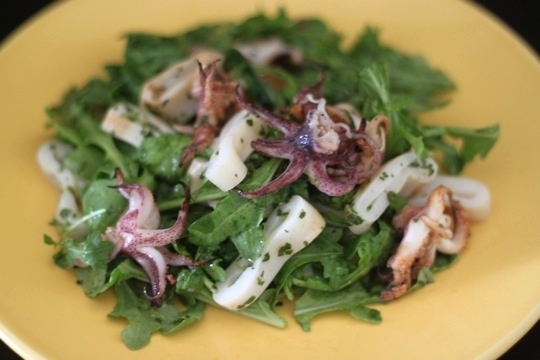
Squid is a mild-flavored, quick cooking, quite decent source of omega-3s, copper and selenium. So if fish is too fishy for you, or you’re craving a new way to get your seafood fix, then this recipe for grilled squid salad is the answer. So much healthier than battered, deep fried calamari, this recipe is light, flavorful and fit to be an appetizer or main course.
Quick-cooking squid over an open flame is the way to go, pulling it off the grill just as the edges get crispy and curl under and before it has a change to get chewy. The mild flavor is made more interesting by dousing the squid in a zippy vinaigrette made from grilled lemons, garlic and lots of oregano. This vinaigrette would also be fantastic with shrimp, salmon and chicken.
Why grill the lemons before making the vinaigrette? Grilling citrus fruit concentrates the flavor and gives the juice less of an acidic bite.
Servings: 4
Time in the Kitchen: 30 minutes to marinate, 30 minutes of hands-on cooking
Ingredients:
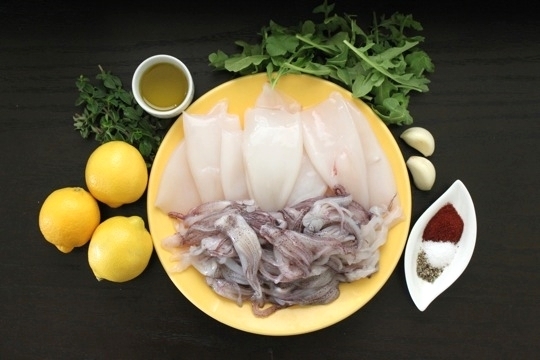
Squid:
1 1/2 pounds cleaned baby squid (tubes and tentacles) (680 g)
2 teaspoons paprika (10 ml)
2 garlic cloves, finely chopped
1/2 teaspoon salt (2.5 ml)
1/2 teaspoon pepper (2.5 ml)
Juice of 1 lemon
2 tablespoons olive oil (30 ml)
Oregano Vinaigrette:
2 lemons, cut in half and brushed with oil
1/3 cup fresh oregano leaves (80 ml)
3/4 tsp salt (4 ml)
1 small garlic clove
1/3 cup olive oil (80 ml)
3 large handfuls arugula
Instructions:
For the squid, mix together paprika, garlic, salt, pepper, lemon juice and olive oil. Marinate squid 30 minutes room temperature.
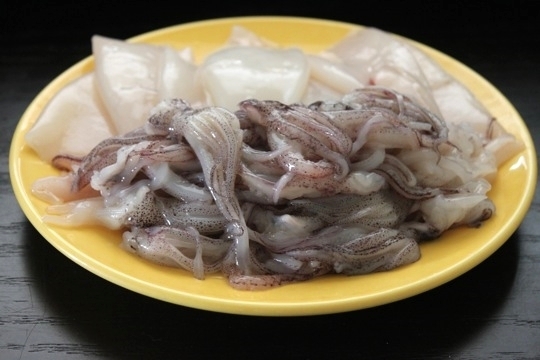
While the squid is marinating, heat the grill to high.
Set the lemons cut side down on the grill. Grill for 3 to 5 minutes until nicely charred.

Squeeze the lemon juice into a food processor or blender. Add the oregano, salt and garlic and blend until oregano is finely chopped. With the blade running, slowly drizzle in the olive oil and continue to process until the vinaigrette is well blended. Set aside.
Thread squid on skewers. Season with salt.
Grill over high heat, 2 to 3 minutes a side, until just cooked through and lightly charred in places.
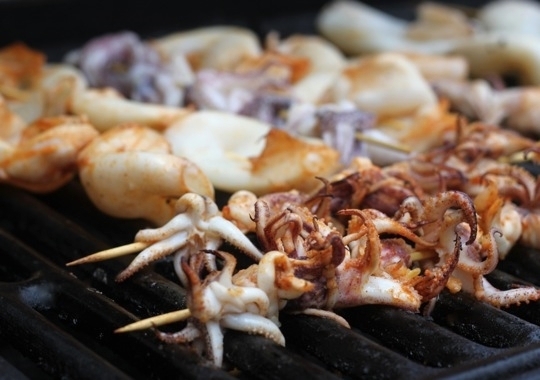
Cut the squid tubes into thin rounds.
In a large bowl, toss the grilled squid tubes and tentacles with half of the oregano vinaigrette. Add the arugula and the rest of the vinaigrette, gently toss and serve immediately.
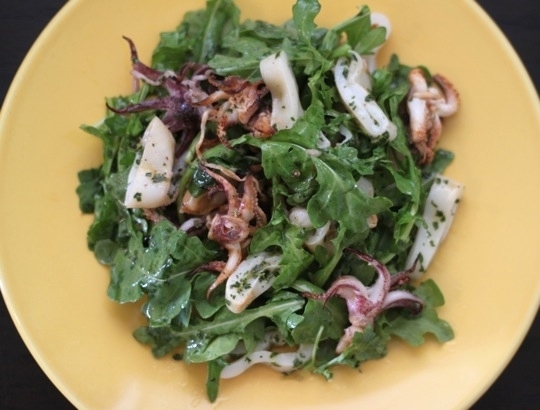
Not Sure What to Eat? Get the Primal Blueprint Meal Plan for Shopping Lists and Recipes Delivered Directly to Your Inbox Each Week




June 20, 2014
How Mama Got Her Sexy Back!
It’s Friday, everyone! And that means another Primal Blueprint Real Life Story from a Mark’s Daily Apple reader. If you have your own success story and would like to share it with me and the Mark’s Daily Apple community please contact me here. I’ll continue to publish these each Friday as long as they keep coming in. Thank you for reading!
 Well I had never had a weight problem in my life before and had always been a very active person. Only when I first fell pregnant, I had a miscarriage after the first 9 weeks, and I started picking up weight. I was clearly going through some emotional stress and the miscarriage had made me so scared to carry on exercising, especially when I fell pregnant again.
Well I had never had a weight problem in my life before and had always been a very active person. Only when I first fell pregnant, I had a miscarriage after the first 9 weeks, and I started picking up weight. I was clearly going through some emotional stress and the miscarriage had made me so scared to carry on exercising, especially when I fell pregnant again.
I put on a lot of weight with my first son (27-29 kgs) and then tried to lose as much as I could before I fell pregnant again with my daughter, but I had not lost nearly enough and then I gained a few with her too. I was sitting on 76 kgs two months after she was born. I really battled to lose the weight after that; I almost felt like my whole body had changed from pregnancy, as even months after my daughter was born I really battled to shed any of the weight. I breastfed exclusively for the first five and a half months and never dropped even 1 kg!!!
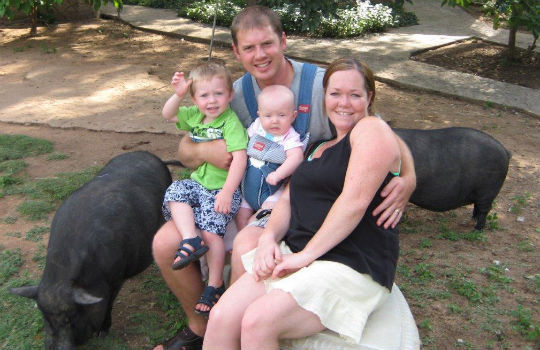
I remember telling my husband that I felt like I would never get there and that I would have this flabby tummy forever. He just kept motivating me to go for it. I felt like a hippo and could not stand anyone taking pictures of me. I felt like an alien in my own skin and had no confidence or sex drive at all.
I went to a dietician and tried to lose weight, following strict conditions and long hours between meals. This helped to shift some weight, but it was so far from natural and being unable to maintain that lifestyle, I just put everything I lost back on and more.
Then I went to an iridologist and she told me that my blood sugar was extremely high and that I should look into it. I went online and found Mark Hyman’s Blood Sugar Solution and this was a turning point for me: he taught me how to control my blood sugar and a lot about food, and that led me to you. I loved his book so much, and it taught me so much about my body and myself. Then it all came together, as a few days after getting the book I read about Mark’s Daily Apple on his website (if I remember correctly). I immediately subscribed and ordered The Primal Blueprint.
This was the best decision I have ever made, and for me, it was the next logical step. It fit in so well and offered even more of a complete lifestyle change for me. It was almost like Dr. Hyman was always meant to bring me to you.
I could not put your book down and following the guidelines was so natural to me. I never battled with any of the meals/foods that I was allowed to eat and I noticed how I could tell immediately how my body was changing.
I have never experienced such a constant flow of weight just coming off (and not too fast either)—not just falling off, but consistently just coming down at about two to three kgs a month. I have never looked back; I never felt deprived for a moment after I got into the full swing of things and everyone was raving about my changing face.
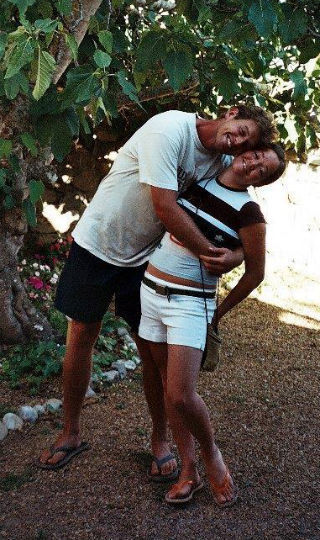
The Primal Blueprint steps are easy to follow and fit my life so well. I feel in control of the food choices I make and I always allow myself the 80% rule. Even when I do have a little cheat, it has never made a difference to my success. I have also been more eager than ever to carry on this lifestyle for the rest of my life. I know my body so well now and when I do have a fat carb/grains meal, SHEW do I suffer from cramps and headaches—I feel so sluggish and gross. It is amazing to experience those feelings from food—feelings I would never have even known came from the food I was eating.
After cutting out ALL grains and processed foods for the first month, I have never felt so amazing in my life. I thought it would be hard to do, and the first two weeks were tricky, but literally after that first 14 days, everything changed like clockwork. I felt amazing, full of energy, and I could feel in my stomach that something had shifted. And as I have said, when I eat those yucky foods now, then I can really feel the effects all over. It does not change my weight at all, and I can get away with the odd cheat, but it just does not feel worth it most of the time.
Within eight months I had gone from 76 kgs to 61 kgs and then in the past six months, I have settled into my perfect weight of 55 kgs. I am so happy and strong. My weight does not fluctuate at all and I really don’t even weigh myself anymore. My weight is just not an issue at all. It feels so amazing to be able to say that. I can see such definition in my tummy, arms, and legs; the body weight training I get at Pole Fitness has toned me and made me so strong. I feel on TOP OF THE WORLD!!!!!!!
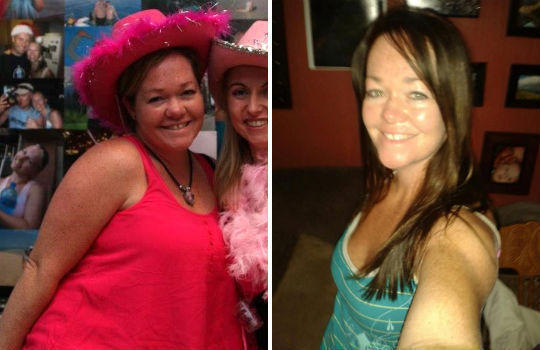
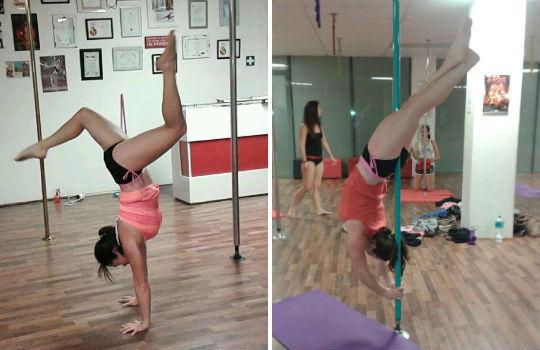
Thank you for giving me my life back. My hubby wants to thank you too. 
All my love and light and perseverance,
Nicky
Get the 7-Day Course on the Primal Blueprint Fundamentals for Lifelong Health Delivered to Your Inbox for FREE




Mark Sisson's Blog
- Mark Sisson's profile
- 199 followers





